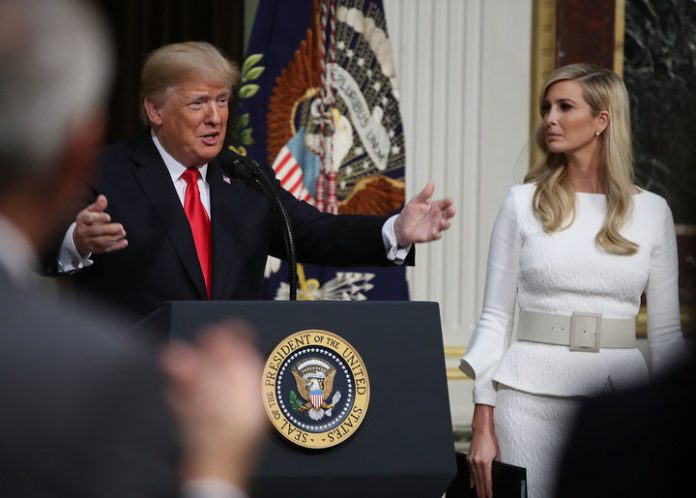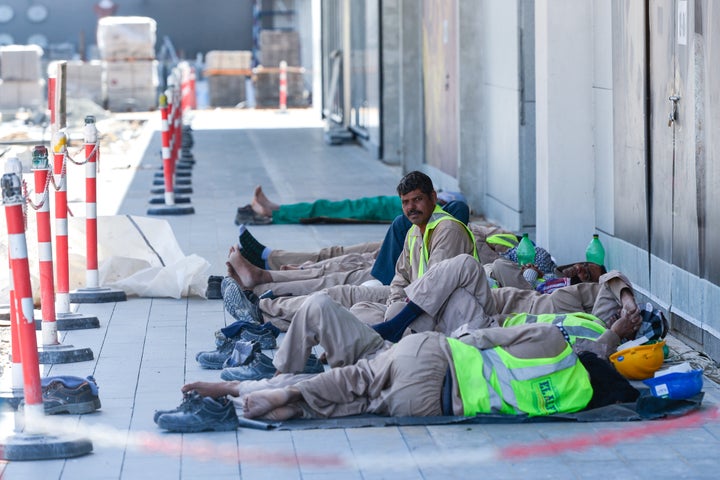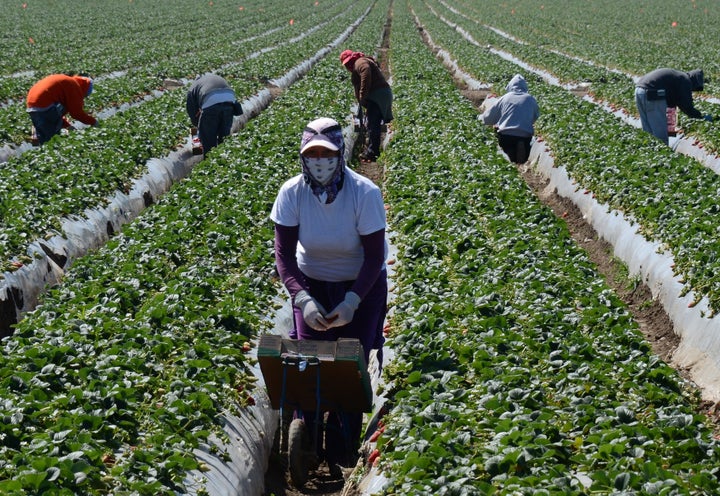
On Friday, Ivanka Trump distributed an opinion piece in The Washington Post featuring her dad’s “strong activity” to battle “the insidiousness of human trafficking.” Nearly 25 million individuals have been exchanged into human trafficking around the world, she composed, and her dad has chosen to make the issue a focal element of his residential motivation.
Hardly any political issues have distracted the White House more than human trafficking. In 2017, Trump marked an official request approaching government offices to get serious about transnational criminal systems. Trump raises trafficking at mobilizes and public interviews and “listening sessions.” He is the primary president to go to a gathering of the Interagency Task Force to Monitor and Combat Trafficking in Persons. He pronounced January 2018 “National Slavery and Human Trafficking Prevention Month.”
Trump’s announcements, similar to his girl’s opinion piece, give human trafficking a role as a best down criminal undertaking in which ladies and youngsters are snatched from their nations of origin and conveyed to the U.S. without wanting to. “Human traffickers go after their exploited people by promising a real existence of expectation and more noteworthy chance, while conveying just oppression,” Trump said multi-month after his initiation. “They take ladies,” he said a month ago, connecting human trafficking to expanded rates of movement and have claimed.
Ivanka Trump additionally depicts human trafficking in colorful, outrageous and formless terms, saying the marvel “fragments families, contorts worldwide markets, undermines the standard of law, reinforces transnational sorted out criminal systems and compromises national security.”
These decrees, be that as it may, depict an issue that looks to some extent like the one found in scholastic and institutional reports. What’s more, specialists and supporters say, from what little we do think about human trafficking, the Trump organization is exacerbating it.

“Trafficking” isn’t what Ivanka supposes it is.
Ivanka Trump refers to the International Labor Organization to guarantee that 24.9 million individuals are “casualties of human trafficking, including constrained work and sex trafficking.”
This isn’t completely precise. While the main little girl’s commentary distinguishes constrained work as a subset of human trafficking, the ILO really utilizes the terms conversely. Everybody working under states of constrained work, paying little mind to where they are or which movement they’re occupied with, has in fact been “trafficked.”
This refinement matters. The ILO’s figure of 24.9 million individuals alludes to all casualties of constrained work around the world, few of whom are snuck crosswise over outskirts and even less of whom are youngsters. As per the ILO’s 2016 Global Estimates of Modern Slavery — the hotspot for Ivanka Trump’s gauge — most trafficking unfortunate casualties is people misused in their nations of origin in household work, agribusiness and development.
Just a single quarter of constrained workers live outside their nation of origin and, of those, 96 percent move to nations with comparative salary levels. The accepted story of human trafficking isn’t a youngster sold to bootleggers and taken abroad; it is a caretaker compelled to work extended periods of time for low pay in the city where she was born.
The canonical story of human trafficking is not a child sold to smugglers and taken abroad; it is a nanny forced to work long hours for low pay in the city where she was born.
A comparable broadness appears in the figures on sex work. The ILO assesses that 4.8 million individuals, including 1 million youngsters, are casualties of sexual abuse around the world. This definition, be that as it may, incorporates each type of prostitution and does not recognize, say, adolescents hijacked to work in whorehouses and grown-ups who take part in prostitution because of destitution or joblessness.
Besides, the ILO noticed that just 4 percent of casualties of business sexual abuse are in North or South America. Most by far are misused in their nations of origin for reasons having little to do with transnational criminal systems and everything to do with debasement, minimization, and weakness. A 2011 investigation of kid sex laborers in Thailand found that the mind-boggling drivers of abuse were social and financial conditions. For poor kids whose guardians couldn’t look for some kind of employment, the examination finished up, “prostitution might be the best decision accessible.”
This doesn’t signify “human trafficking” doesn’t exist. Be that as it may, the marvel Ivanka Trump depicts — individuals being coercively taken crosswise over outskirts for work or sexual abuse — has all the earmarks of being considerably more segregated than her seven-digit gauge proposes.
In 2014, an across the country database of law requirement organizations found only 150 feelings for wrongdoings identified with carrying people into the United States without wanting to. A recent report found that the U.S. government had cut its very own appraisals of the issue from 50,000 unfortunate casualties to 17,500 in only three years without clarifying how the numbers were determined in any case. Indeed, even as Trump depicts the issue as the most exceedingly awful it’s at any point been, his own public statements take note of that the Department of Homeland Security recognized only 500 casualties of trafficking across the country in 2017.

Many immigrants in the United States work under conditions of debt bondage in agriculture. This form of labor trafficking, advocates say, will be exacerbated by the Trump administration’s border policies.
The Trump Administration may be making it worse.
While one issue in Ivanka Trump’s opinion piece concerns the meaning of trafficking, another worries her dad’s response to it.
The president’s solitary major authoritative exertion on the issue is passing two laws, the Allow States and Victims to Fight Online Sex Trafficking Act and the Stop Enabling Sex Traffickers Act, the two of which intended to close down online commercials for prostitution. While lawmakers supported the crackdown with calls to protect sex laborers (counting utilizing misrepresented measurements), real sex specialists have entirely censured the laws for driving the business underground and expanding their helplessness.
“This bill professes to target human trafficking,” grown-up entertainer Lorelei Lee posted on Instagram, “however does as such by making new punishments for online stages that are overwhelmingly utilized by consensual, grown-up sex specialists to screen customers, to share ‘terrible date records,’ to work inside, and to generally speak with one another about approaches to remain alive.”
The organization’s other enemy of trafficking endeavors is comparably separated from the proof on the nature and size of human trafficking. Ivanka Trump’s commentary says nations with high trafficking rates will never again get an outside guide from the United States, yet this presentation incorporates significant exemptions and just influences a little bit of U.S. bolster. The president’s enemy of trafficking official request just repeats the existing arrangement and conveys dubious orders, for example, “upgrade participation with outside partners.”
Other organization activities incorporate demonstrating an instructional video to visa candidates, in spite of the low probability that casualties of trafficking or pirating rings would apply for visas through authority channels.
In about these endeavors, the organization puts its enemy of trafficking endeavors inside its more extensive movement approach. “As human runners and traffickers have figured out how the amusement is played and how to diversion the framework, we have seen an amazing 1,700 [percent] increment in haven claims since the year 2010,” Trump said in November, comparing medication and human dealers with individuals applying for outcast status.
In June, at that point, Attorney General Jeff Sessions contended in USA Today that open fringe strategies would support human trafficking. VP Mike Pence has made a similar contention, telling a room loaded with Immigration and Customs Enforcement faculty that “nullifying ICE additionally would mean more human trafficking.”
Yet, the connections between migration, sexual abuse, and constrained work aren’t that basic.
In the United States, the factors leading to forced labor and sexual exploitation are the same as those abroad: structural inequality, systematic vulnerability and endemic poverty.
“Trump’s policies are a gift to human traffickers,” Saket Soni, the executive director of the National Guestworker Alliance, told The Guardian last year.
ICE roundups, Soni pointed out, make undocumented immigrants less likely to report forced labor conditions. Trump’s executive order cutting federal funds to sanctuary cities will make it harder for local law enforcement to investigate crimes against immigrants, including sexual exploitation. While the Department of Homeland Security and ICE claim to protect victims of trafficking from prosecution, these principles are only intermittently enforced and often result in people being deported back to countries where their risks of forced labor far exceed those in the United States.
It’s also worth remembering that the term “human trafficking” doesn’t require movement across borders. In the United States, the factors leading to forced labor and sexual exploitation are the same as those abroad: structural inequality, systematic vulnerability and endemic poverty. Half of the children released from the foster care or juvenile justice systems end up homeless within six months. More than one-quarter of teen runaways report that they’ve engaged in “survival sex” to earn money.
The most common form of forced labor in the United States takes place in agriculture, where tens of thousands of immigrants from Central America pick fruits and vegetables under conditions of debt bondage.
A 2014 study notes that even when victims are rescued from these forms of exploitation, “life post-trafficking involves the same structural vulnerabilities that enabled them to be trafficked in the first place” — namely, low-wage work, precarious housing, and a ragged welfare system.
This is the more complex reality behind the imprecise, broadly defined term “human trafficking”: It is not an exotic problem in need of new approaches, but an old one that requires strengthening the systems we already have.

















